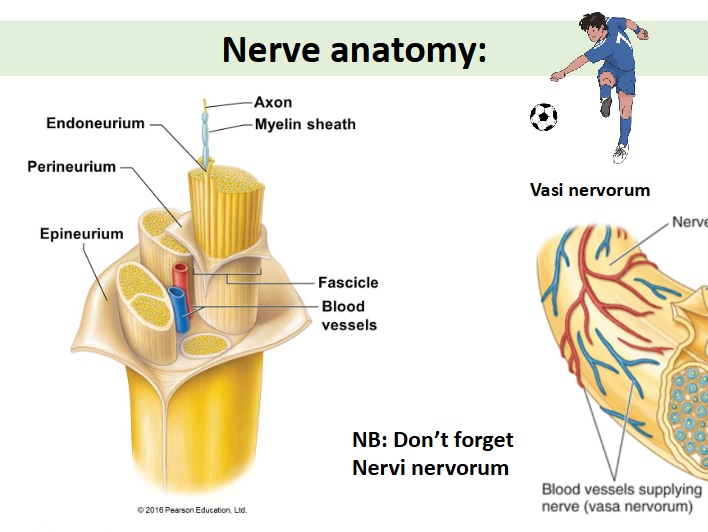neurones and related cells
1/20
There's no tags or description
Looks like no tags are added yet.
Name | Mastery | Learn | Test | Matching | Spaced |
|---|
No study sessions yet.
21 Terms
three main functional classes of neurone
sensory neurone, interneuron and motor neurone
this can also be sensory input (eye), integration (brain) and then motor output
a typical neurone
a neurone like this has the potential to sum incoming inputs, a form of integration or processing
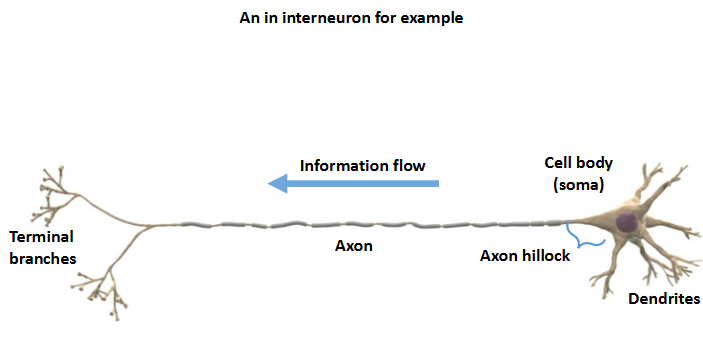
a typical neurone: axonal transport
showcases how sensory inputs can be processed to therefore carry out an action

resting membrane potential
the resting membrane potential is maintained by potassium and sodium leak channels
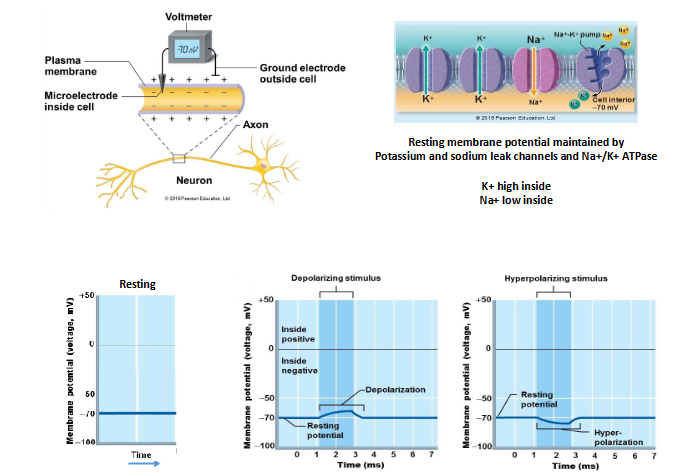
a typical chemical synapse
a typical chemical synapse between neurones:
presynaptic neurones release chemical transmitters like ACh
these diffuse across the synaptic cleft
these activate post synaptic receptors on the dendrites of the post synaptic cell
this leads to local transient changes in membrane potential
chemically gated ion channels can detect neurotransmitters and affect resting membrane potential, as well as this, they can also attach to the receptor
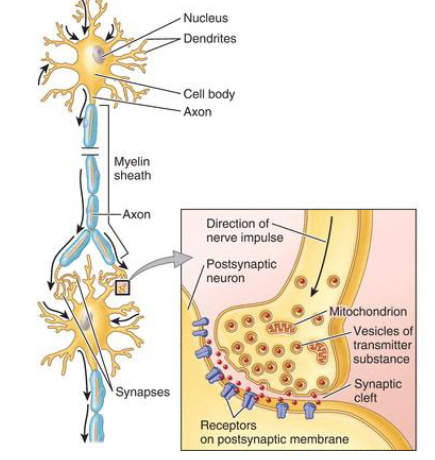
neurones triggering an action potential
regenerative wave of electrical excitation can travel at different speeds from 1-2 m/s to150 m/s
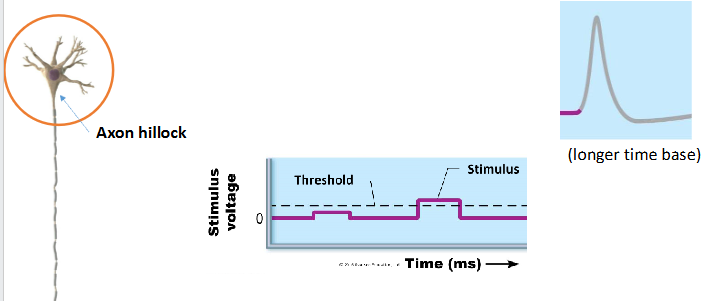
voltage gated ion channels
these voltage gated ion channels detect passive changes in the membrane potential, an action potential is triggered at the axon hillock by the opening changes in the membrane potential. (examples can be sodium, calcium and potassium).
action potentials can travel long distances and the information flow is on the left side

the action potential
there are different stages of the action potential, some of these are the resting state, depolarisation etc
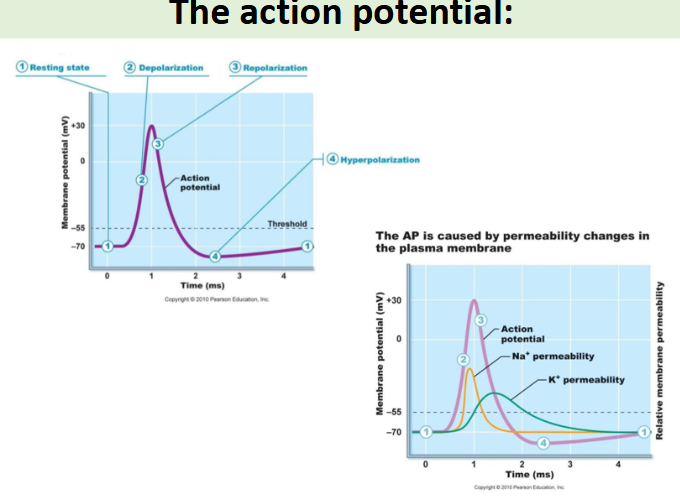
schwann cells
this is conduction velocity with Schwann cells and salutatory nerve conduction. the conduction velocity would depend on axon diameter and the myelination.
there is also the node of ranvier and it is good to know that the sodium channels are not evenly distributed
the presynaptic terminal (bouton)
this is another word for the chemical synapse
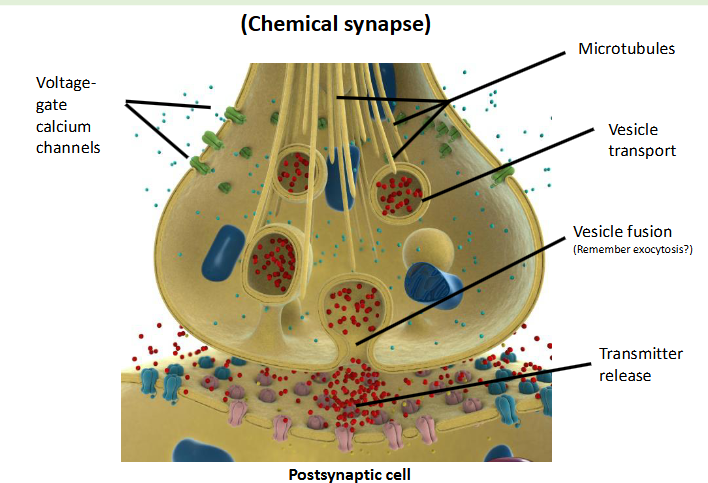
how does the synaptic response subside
the removal of neurotransmitters occurs in three ways
diffusion- this is released in the synaptic cleft and then diffuses away
enzymatic degradation- this is then broken down by enzymes
uptake by cells- this is returned to neuron (reuptake), transported to neighbouring cells
graded potential and summation
how can the membrane depolarise to threshold?
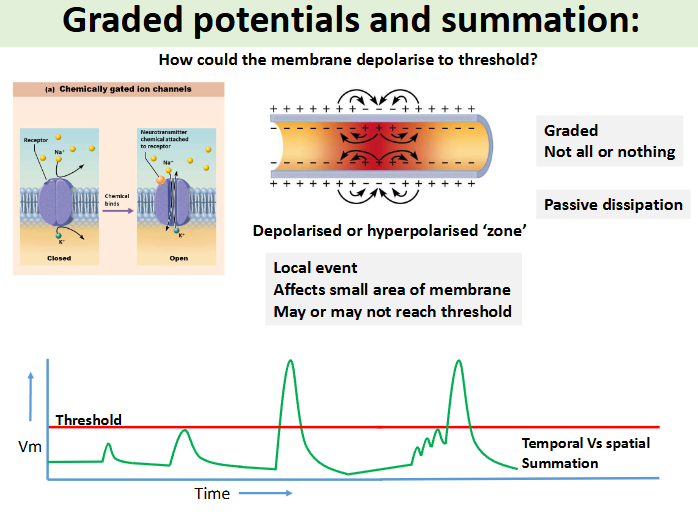
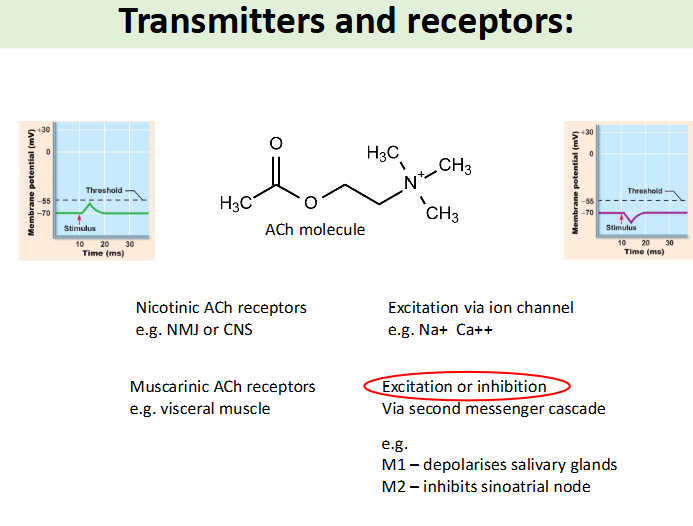
transmitters, receptors and integration
input of signals from other neurones and integration may or may not trigger the action potential. there would be a nerve conduction and this would depolarise the terminal boutons. there is also calcium dependent/ transmitters release and a calcium influx
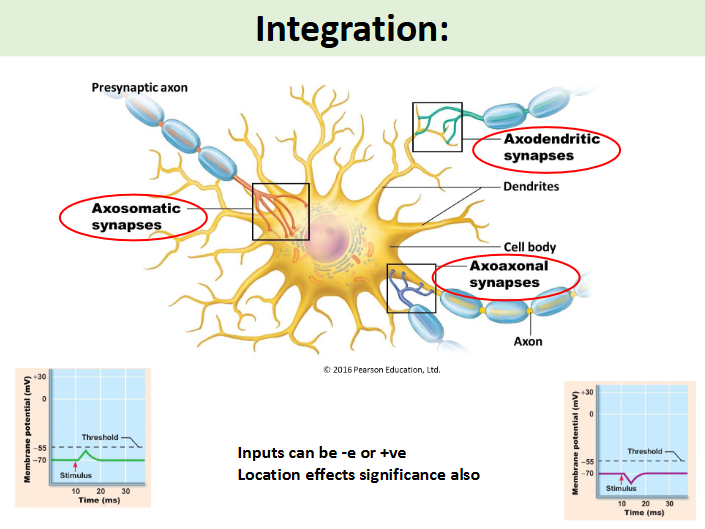
graded potential
local event is passive
affects over short distance
variable amplitude
repolarisation is a simple decay over time and can summate
action potential
regenerative wave is active
affects over long distance possible
all or nothing event - set amplitude
repolarisation is dependent on the ion channels that can summate
electrical synapse
these are not chemical but can direct an electrical connection. the connections can bridge between cells and the functional syncytium
glial cells
there are four main neuroglia support CNS neurones, these are astrocytes, microglial cells, ependymal cells and oligodendrocytes
the two major neuroglia seen in the PNS are the Schwann cells and the satellite cells
glial cells general role
surround and support neurones
electrical insulation
supply nutrients
maintain chemical environment
destroy / remove dead cells and pathogen
PNS glia
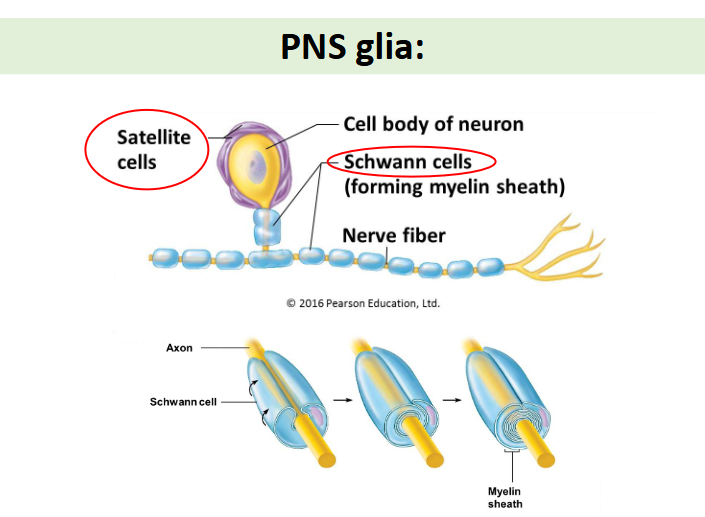
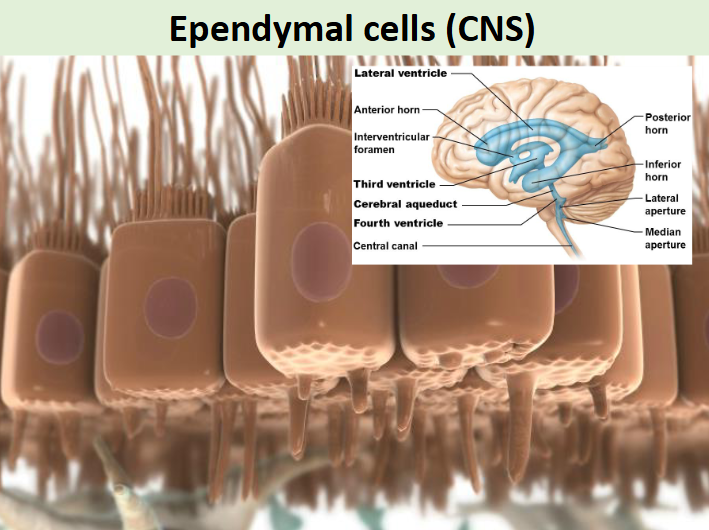
potential key terms
astrocytes (CNS), oligodendrocytes (CNS), ependymal cells (CNS) and microglia cells
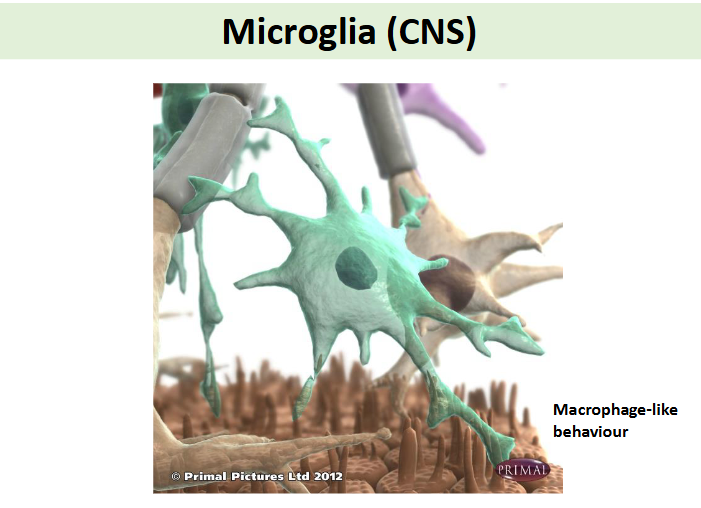
nerve anatomy
nerve ageing: some generalities
central - neuronal atrophy, loss of myelination, noisy processing and dopamine loss
peripheral - declined axon transport, axonal atrophy, myelin loss and impaired regeneration
